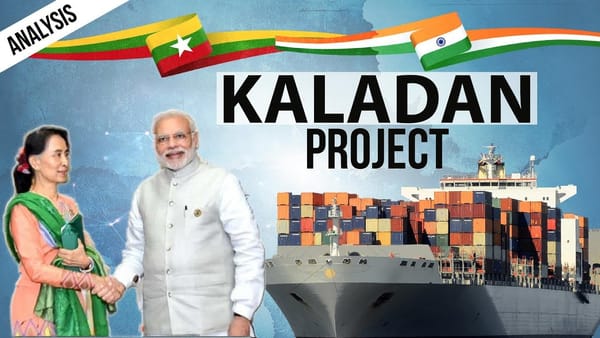Table of contents
Why in News?
In February 2021, the Myanmar military leaders ousted the elected government of Aung San Suu Kyi. A resistance movement was anticipated as a result, that would subside in a few months.
- Three years later, in 2024, the opposition to military rule has gained strength.
- Ethnic Armed Organisations (EAOs) and the People’s Defence Forces control many towns in different parts of the country.
A few weeks ago, the Arakan Army captured Paletwa in the Chin State which lies on Myanmar’s western borders with Bangladesh and India.
The developments in Paletwa will impact the Indian government’s Kaladan Multimodal Transit Transport Project (KMTTP) in Myanmar, which has already faced significant delays.
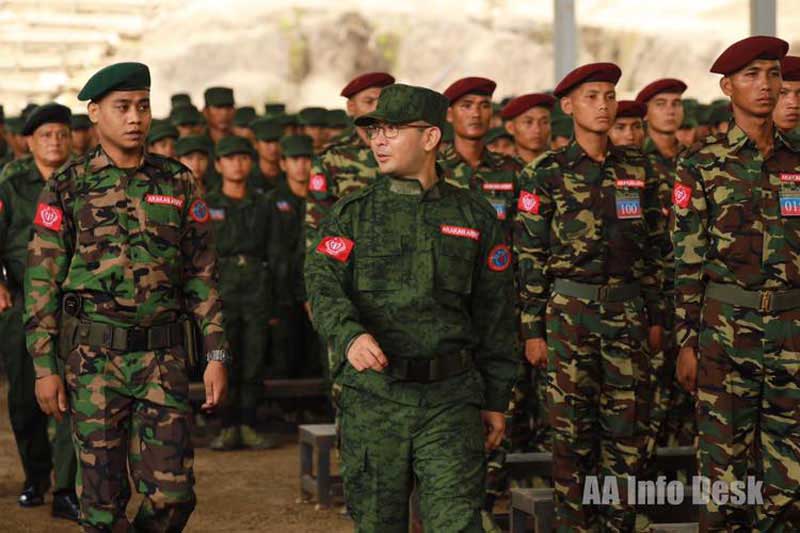
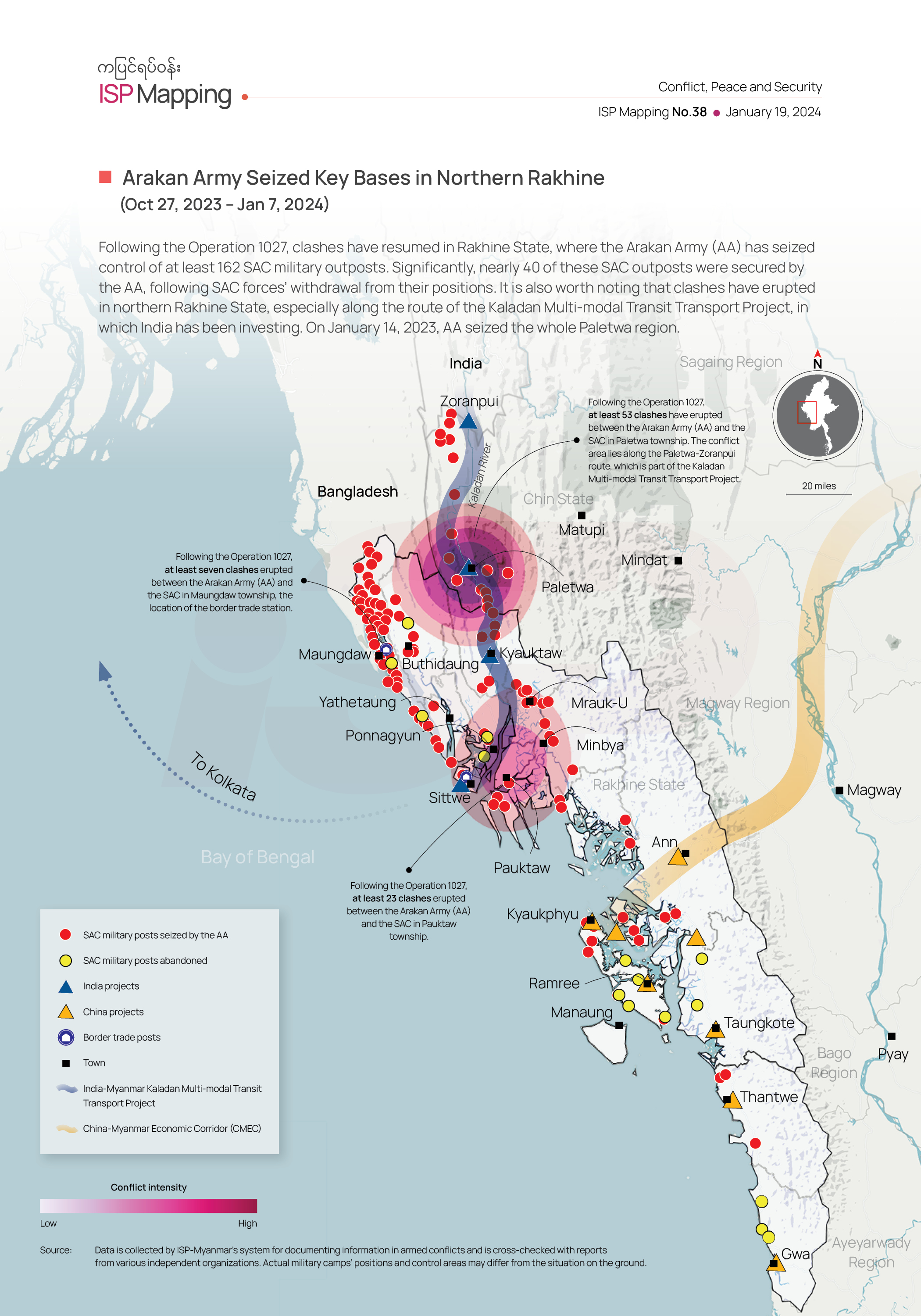
Arakan Army
The Project
The Kaladan Multi-Modal Transit Transport Project (KMTTP) is a cornerstone of India's strategic and infrastructural development, especially in the context of its 'Act East' policy and regional integration efforts.
- The project was initiated in collaboration with Myanmar.
- Components: Involves sea, river, and road transportation:
- Sea Route: From Kolkata to Sittwe (539 km).
- River Route: Sittwe to Paletwa via the Kaladan River (158 km).
- Road Component: Paletwa to Indo-Myanmar border (110 km), and further into Mizoram.
- It aims to forge a new connectivity pathway and bolster economic development, particularly for India's landlocked northeastern states.
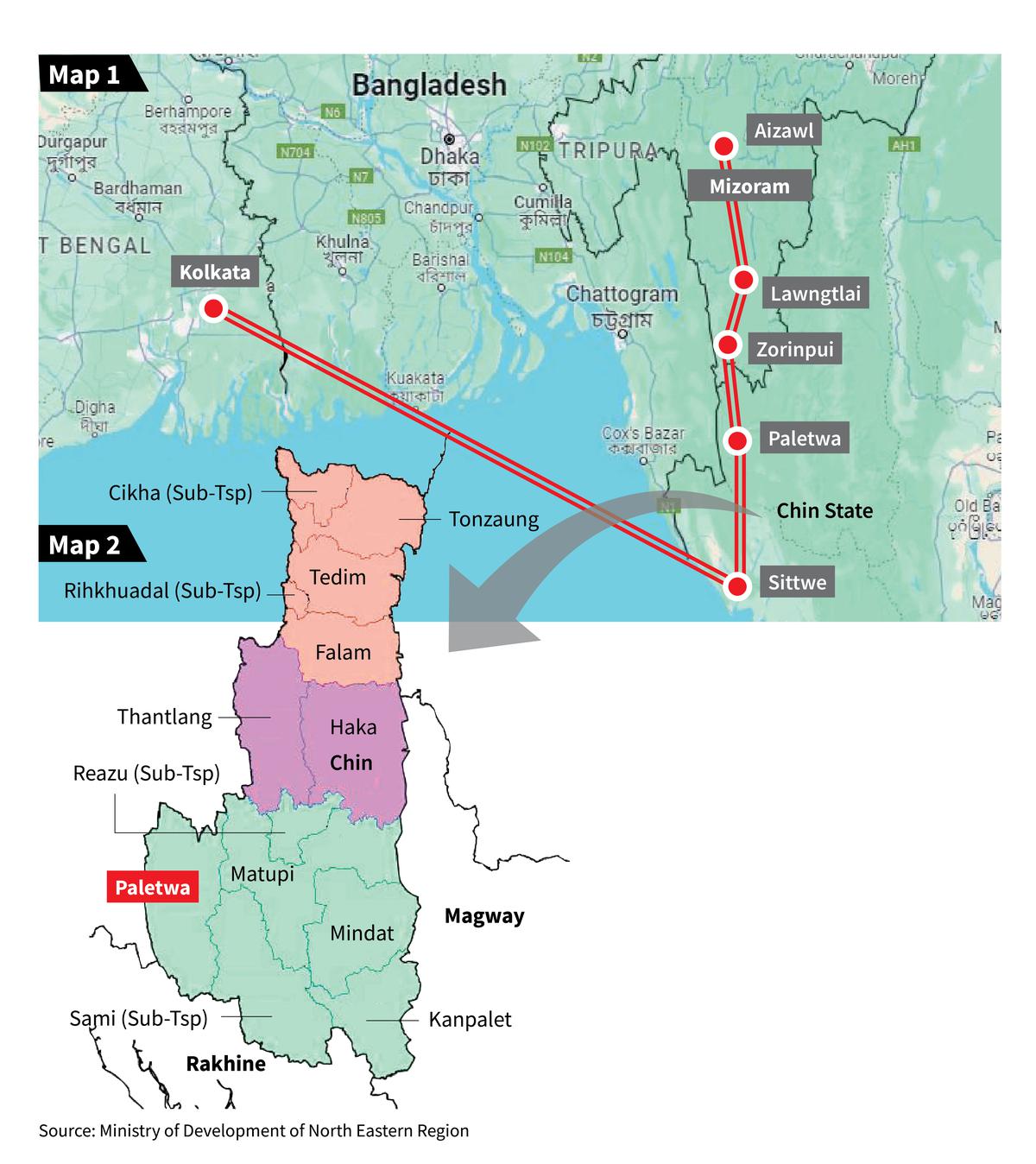
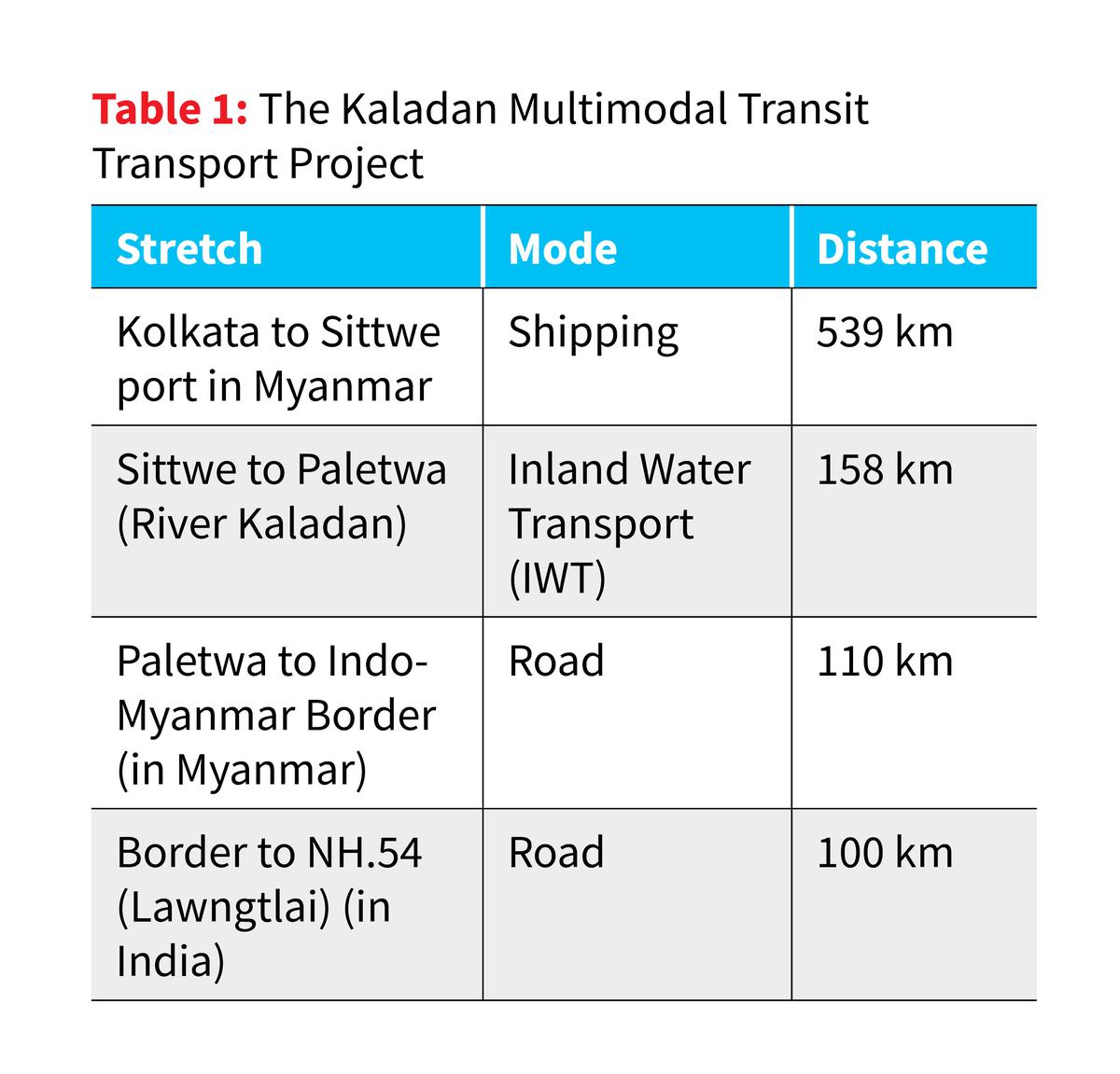
Map 1 shows the route of India’s proposed Kaladan Multimodal Transit Transport Project. Map 2 shows Chin State where current tensions are playing out.
This article will explore the various dimensions of the KMTTP, exploring its strategic significance, economic implications, geopolitical considerations, and the multifaceted challenges it encounters.
Regional Dynamics
The Kaladan project is a strategic response to the growing footprint of China's infrastructure projects like the China-Myanmar Economic Corridor (CMEC).
This cooperation with Myanmar is pivotal for India to establish a more significant presence in Southeast Asia and protect its strategic interests.
The initiative is seen as an integral part of India's broader geopolitical strategy, aimed at offering a counter-narrative to China's Belt and Road Initiative, by strengthening regional alliances and asserting India’s influence in the region.
Strategic Significance
- Alternative to the Chicken's Neck: The project provides a much-needed alternative to the existing narrow and strategically vulnerable Siliguri Corridor, enhancing India's control over its northeastern frontier and reducing logistical vulnerabilities.
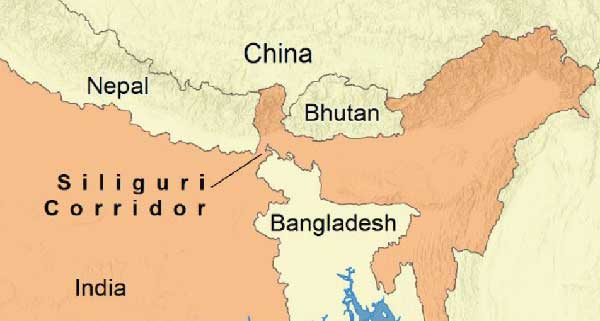
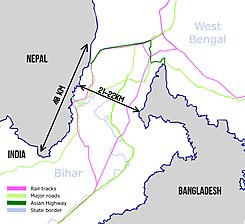
Siliguri Corridor - "Chicken Neck"
- Act East Policy Catalyst: As a key component of India's Act East Policy, the KMTTP is set to enhance economic integration and diplomatic ties with Southeast Asia, reflecting a shift from 'Look East' to 'Act East' and indicating a more proactive stance in the region.
- Cost and Distance Reductions: The Kaladan corridor is expected to significantly reduce the distance and cost of transportation from Kolkata to Mizoram, thus lowering the economic barriers and facilitating smoother trade flows.
- Security and Sovereignty: The KMTTP enhances India's ability to safeguard its borders and maintain sovereignty over its northeastern corridor, which is crucial given the region's vulnerability due to its geographical location.
- Socio-Economic Development: The new route is poised to stimulate socio-economic development, leading to job creation in both northeastern India and Myanmar. It also has the potential to spur ancillary industries, tourism, and local commerce, contributing to the region's overall economic fabric.
We can't clear UPSC for you.
But with our personalised mentor support, you'll be ready to do it yourself.
Economic Implications
- Regional Development: The project promises to transform the economic landscape of India's northeastern states by providing new avenues for trade and industrial development, leading to job creation and enhanced standards of living.
- Trade Enhancement: By shortening the distance between Kolkata and Mizoram, the KMTTP facilitates more efficient trade routes to Southeast Asia, which is expected to boost trade volumes and economic activity.
- Investment Attraction: Improved connectivity and infrastructure are likely to attract both domestic and foreign investment into the region, fostering a climate conducive to business and industry.
Geopolitical Considerations
- Balancing China: The KMTTP serves as a counterbalance to China's Belt and Road Initiative and its growing presence in Myanmar, providing India with a tangible presence in the region.
- Myanmar Relations: The project underscores the importance of India-Myanmar relations, signaling mutual benefits and shared goals between the two countries.
- Regional Connectivity: It contributes to regional connectivity schemes, aligning with other initiatives such as the Bangladesh-China-India-Myanmar (BCIM) Economic Corridor and the India-Myanmar-Thailand Trilateral Highway.


Bangladesh-China-India-Myanmar (BCIM) Economic Corridor
Challenges and Controversies
- Security Issues: Insurgencies and ethnic conflicts within Myanmar and India's northeastern states pose risks to the infrastructure and the safety of workers, potentially leading to project delays and cost overruns.
- Environmental Concerns: The project's environmental impact, especially regarding river dredging and construction, has raised concerns among environmentalists and local communities.
- Diplomatic and Political Dynamics: The KMTTP is subject to the ebb and flow of diplomatic and political relations between India and Myanmar, as well as internal political stability within both nations.
- Geopolitical Sensitivities: The region's delicate security balance, marked by ethnic insurgencies and interstate tensions, poses a substantial risk to the project's implementation and long-term viability.
- Cost Overruns: Due to the difficult terrain and security situation, the project has faced delays that can lead to budget escalations, necessitating meticulous financial planning and management.
- Technical and Logistical Hurdles: The multi-modal nature of the project means that it faces a complex set of technical and logistical challenges, from the coordination of sea, river, and road transport to the maintenance of infrastructure across international borders.
- Local Displacement: The development of new infrastructure may lead to the displacement of local communities, necessitating robust and fair rehabilitation programs to ensure their well-being.
- Dependence on Myanmar's Stability: The success of the KMTTP is intertwined with the political stability of Myanmar. Civil unrest or governmental changes in Myanmar can significantly impact the project timeline and operations.
While security agencies will constantly evaluate the modalities of engaging with armed groups on India’s borders, there is a need to scale up humanitarian and development assistance in coordination with a broader spectrum of ethnic organisations and local people to expedite Indian investments in the region
Way Forward
- Collaborative Governance: India and Myanmar need to collaborate closely, addressing not only the infrastructural aspects but also the social, environmental, and security challenges that arise.
- Comprehensive Approach: A multi-dimensional approach, involving diplomatic dialogue, technical expertise, security measures, and environmental protection, is crucial for the project's success.
- Community Engagement: Engaging with local communities, and ensuring their needs and concerns are addressed, is vital for the project's long-term sustainability and success.
- Regional Cooperation: India must work with regional partners and stakeholders to ensure that the KMTTP aligns with broader regional objectives and does not exacerbate existing conflicts or create new ones.
In conclusion, the KMTTP is a transformative project with the potential to significantly alter the economic and strategic dynamics of Northeast India and the broader region.
Its successful implementation will depend on a nuanced approach that considers the intricate tapestry of geopolitical, economic, and societal factors at play.
Previous Post